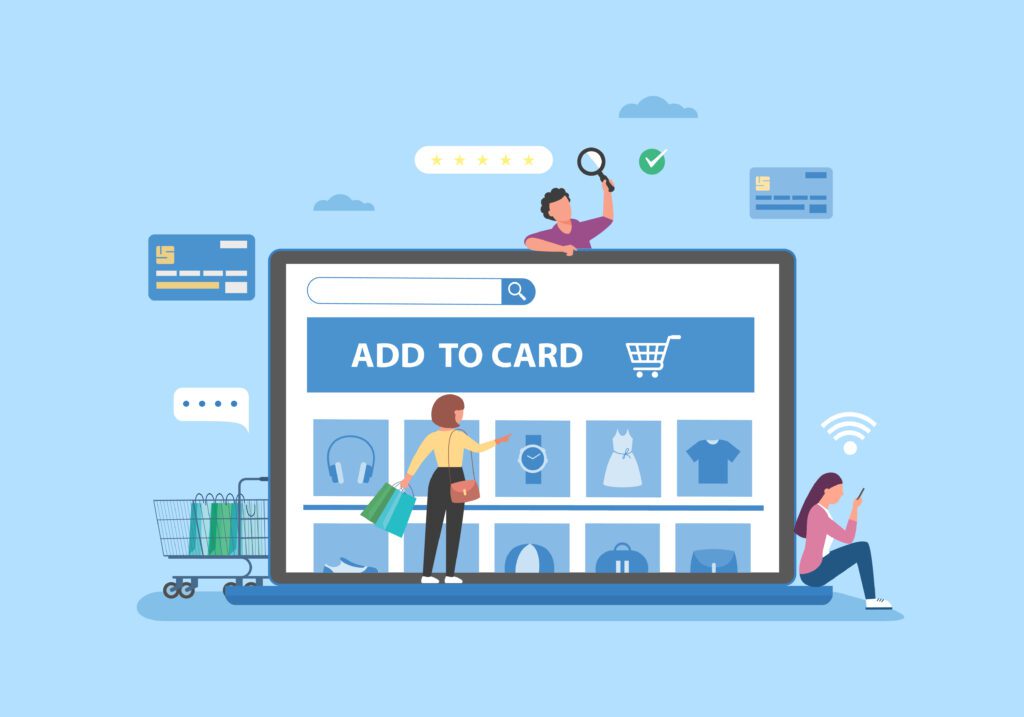With the evolving capabilities of online technology, many people are taking the opportunity to open small e-commerce businesses. From selling handcrafted jewelry to advertising products on online marketplaces, smaller business owners can reach national and international customers with their goods.
As these small businesses take orders, they often rely on fulfillment processes to pick and pack orders before shipping them to customers. Two common fulfillment terms often misunderstood in the e-commerce space are e-commerce fulfillment and dropshipping.
What Is E-Commerce Fulfillment?
E-commerce fulfillment is a business model where you oversee the entire supply chain. Your small business markets products, handles customer service and takes the orders. You then fill the orders with products that are typically stored in a warehouse, shop backroom or even a spare room in your home. You or your employees perform the picking and packing of inventory for shipments.
The entire concept of e-commerce fulfillment is that you own the inventory outright. You decide how the inventory will be stored. Typically, you own the storage means, as many small business owners may use a garage on their property or rent a self-storage unit to hold the products. The work of delivery may also be accomplished using personal delivery drivers for regional transportation or paying for delivery services through national and global delivery companies or 3PLs.
You might choose the e-commerce fulfillment method if you want full control of the inventory the moment it is purchased and delivered from a wholesaler or supplier. It may require a larger capital investment for inventory procurement and purchasing or leasing warehouse spaces.
What Is Dropshipping?
Dropshipping is another fulfillment business model. For this method, you continue to handle all aspects of marketing, advertising and taking orders, but the manufacturer, wholesaler or supplier manages the picking and packing processes. The manufacturer or supplier also typically decides on the type of delivery services they will use to get the products to the customers.
With dropshipping, you do not own the inventory or store it at a location that you strictly control. Instead, you focus your time and working capital on advertising and marketing products, as well as providing customer service. You give inventory ownership and delivery control over to the manufacturer or supplier of the products.
With this business method, a small business owner may obtain cost savings by not having to rent or own warehousing space. It often works when you are dealing with limited capital that you do not want to spend on warehouse overhead or staff costs.
Why the Confusion Between These Methods?
Often, dropshipping and e-commerce fulfillment are considered interchangeable processes — but they are entirely different business models. A reason for the confusion could stem from the term “e-commerce.” Pairing “e-commerce” with “fulfillment” might make people believe it is a description of the order-taking process used by online stores. Meanwhile, dropshipping is often thought of as a transportation method used to get the products out of the warehouse and to customers.
Rather, the distinctions between these methods are based on where the inventory is stored and who owns the products for the orders.
Which Method Is Right For Me?
Every small business has unique operations, inventory storage requirements and budgetary limits. When trying to select between these two methods, keep these aspects in mind:
- E-commerce fulfillment requires higher working capital for inventory purchasing and storage, yet allows for greater fulfillment control and higher profit margins.
- Dropshipping allows for lower investment costs to save on inventory storage and management, yet requires profits to be shared with suppliers who will control fulfillment and delivery processes.
Evaluating your present budget and operations should allow you to select the fulfillment model that works best for your business. In addition, some companies use both methods, as they may ship certain products using dropshipping if the products are too large or require special storage requirements.
For more information, check out the accompanying resource.
AUTHOR BIO: Jay Catlin is CEO at AMS Fulfillment, a leading order fulfillment company servicing B2B and B2C clients nationwide. Catlin has been with the company since 2002 and helped grow AMS into the successful third-party fulfillment entity it is today
Related posts
- What Is An Online Marketplace?
- What Is Dropshipping?
- 6 Simple Steps To Start Dropshipping Business
- Beginners Guide To Sell On Amazon In 2024
- 7 Pro Tips To Increase Amazon Sales
- Getting Started as a Flipkart Seller: A Comprehensive Guide
- B2B vs B2C Marketplaces: 11 Key Differences
- 10 Reasons To Start A Dropshipping Business
- List Of The Top Dropshipping Niches In 2024
- Top 10 E-commerce Fulfillment Companies In Delhi
- Pros & Cons Of Offering Free Shipping In Ecommerce
- 9 Benefits Of Omnichannel For Your Business
- Omnichannel Fulfillment Vs Multichannel Fulfillment
